What goes into creating an icon? Our latest issue scrutinises the muses, photographers and designers that go into creating unmistakable images that speak to the culture of the time – from early 20th century Soviet agitprop to a working-class lad from east London who somehow became one of the most recognisable faces on the planet.
BRAND BECKHAM: THE MAKING OF A MODERN ICON
“He makes it look so simple…but believe me, it is not.” – Graham Taylor
“He is such a big celebrity, football is only a small part.” – Sir Alex Ferguson
“It is rare a man can be that tough on the field and also have his own line of underwear.” – President Barack Obama
For most figures of popular culture, the acute gaze of the lens is part of the job – to be captured for public consumption, to create a personal iconography that relates to your art. We expect our musicians, our artists and our actors to transform themselves, we demand a visual flair. But from a midfielder from Leytonstone? Not likely. And yet, with his tattoos, his hairstyles and his long sleeves, David Beckham has become one of only a handful of truly international icons – instantly recognisable and universally adored from Oslo to Osaka.
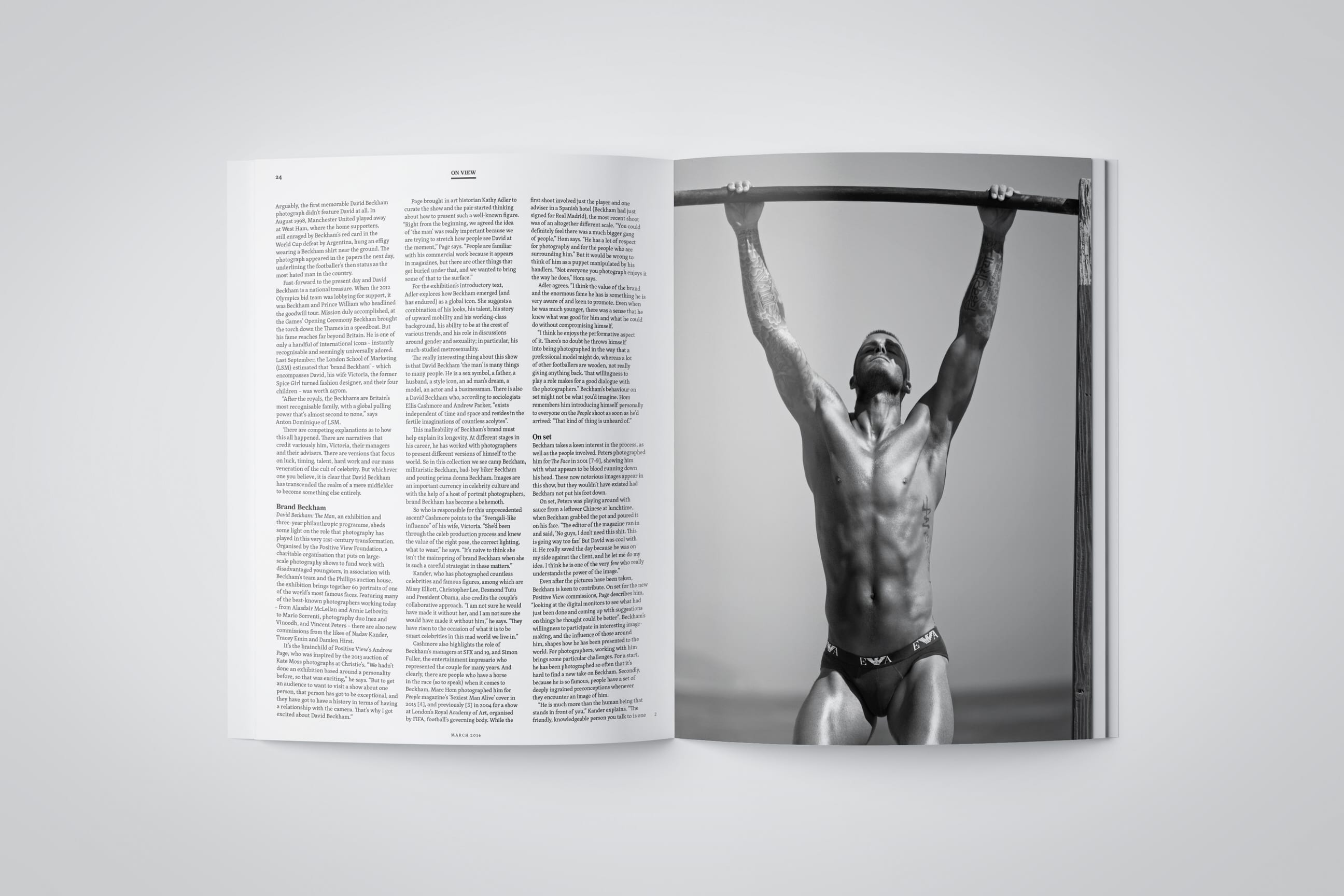
“After the royals, the Beckhams are Britain’s most recognisable family, with a global pulling power that’s almost second to none,” says Anton Dominique of the London School of Marketing, who estimates their worth at just under half a billion pounds.
Ahead of David Beckham: The Man, a three-year world-touring exhibition and philanthropic programme instigated by Positive View, Rob Alderson investigates his rise, from the working-class London lad who announced his arrival with the graceful swoon of his right foot at Selhurst Park two decades ago, to the sex symbol and global ambassador for Unicef he is today. In particular, he focuses on the part photography has played in this journey. As Kathy Adler, curator of ‘the exhibition and former Director of Education at the National Gallery writes, “the photographs constitute a narrative of Beckham’s life and of the position he occupies in contemporary culture.”
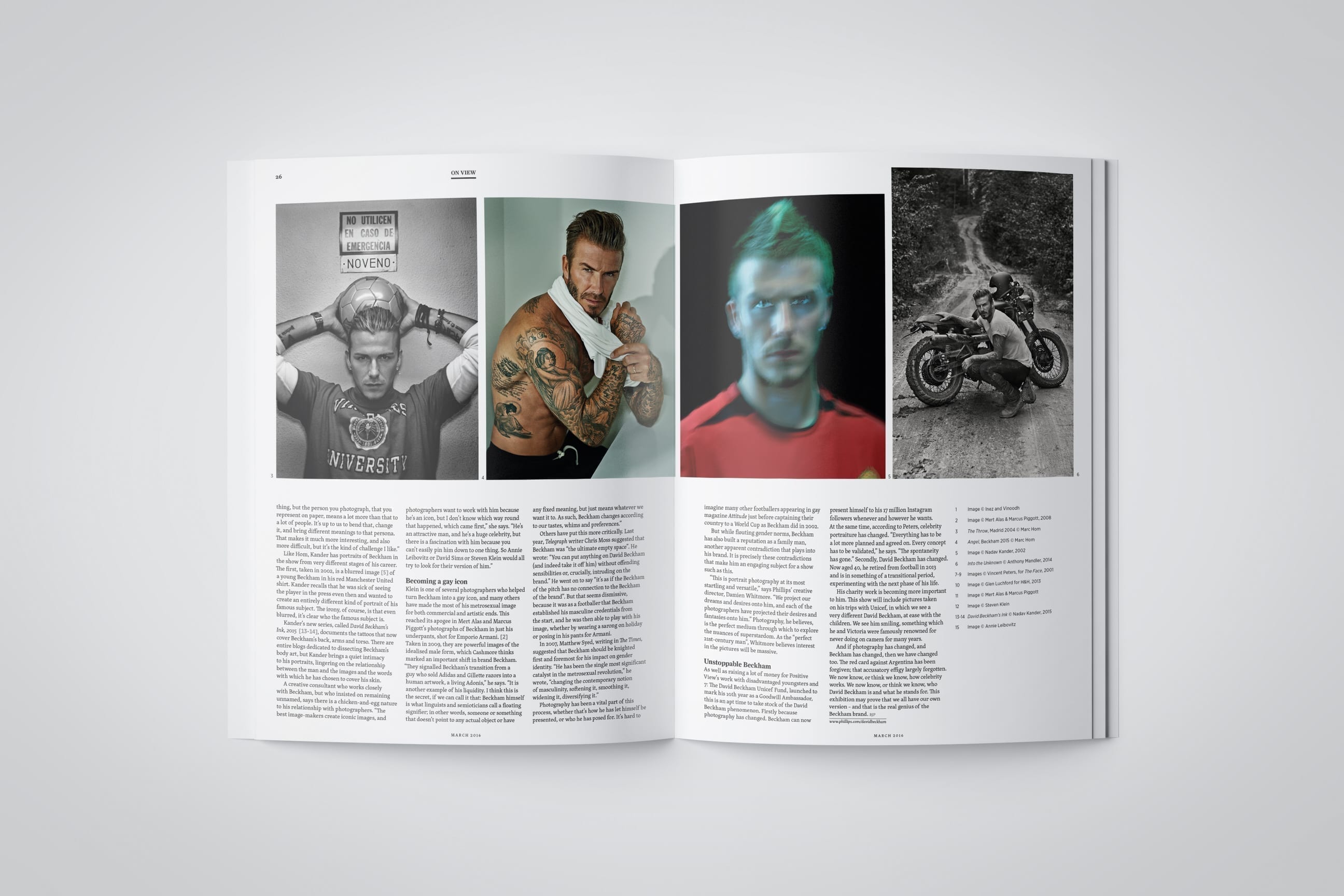
Beckham is a unique proposition for photographers – known for is athletic prowess more than his political views or cultural tastes, his instantly recognisable face has become something of a blank canvas onto which photographers project their own ideas. Annie Leibovitz, Steven Klein, Inez and Vinoodh – all have looked to capture the modern type of masculinity Beckham offered up. His openness to risk, allowing himself to be photographed outside the usual tropes of the footballer in front of the camera, worked to benefit both him and the photographers, who found a subject who embodied a new kind of fame, yet was eager to play his image.
Who better, then, to grace the cover of our icons issue?
THE ART OF REVOLUTION
Our feature with legendary designer David King, on the other hand, examines a different kind of iconography. His unrivalled collection documenting the extraordinary visual history of the Soviet Union and Weimar Germany is being transferred to the Tate Modern, including vast archives of photographs, posters and handmade montages. BJP’s creative director Mick Moore visited him to discuss his archive and his latest book on the life and work of groundbreaking political artist John Heartfield.
The original masters of propaganda, Stalinist posters made adept use of colour, type and illustration to mask sinister, authoritarian messages to the Russian populace. The collection also showcases the famously falsified photographs from the era, in which Stalin would demand the retouching of photographs to remove his political enemies, such as Leon Trotsky and Lev Kamenev.
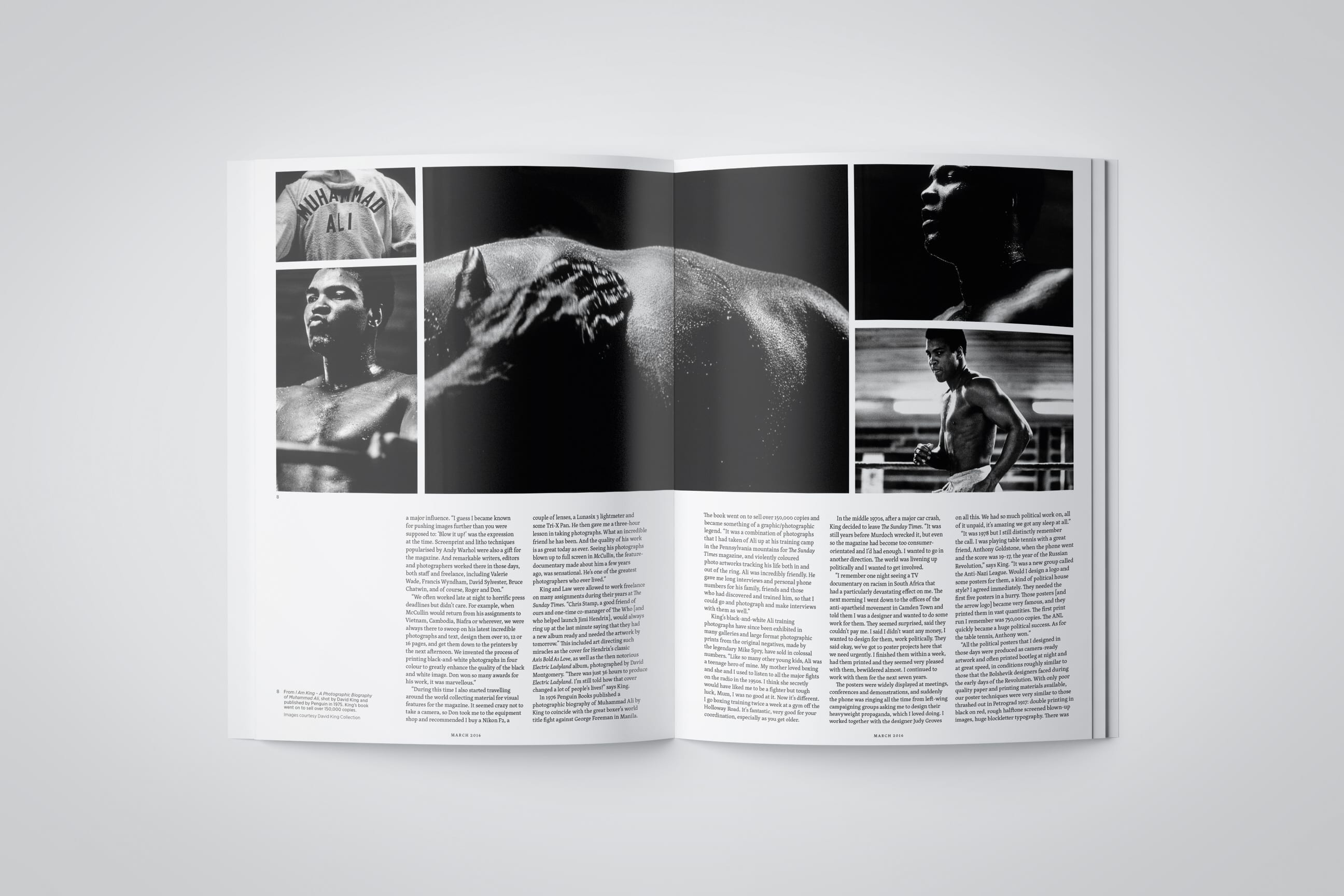
As Moore writes, King, who was made art editor of The Sunday Times magazine at only 22, helped “[rewrite] the rules of what could be expected from a magazine.” His freelance assignments are the stuff of legend, art directing the covers of two classic Jimi Hendrix albums, Axis Bold as Love and Electric Ladyland. Not content with design, King was also an accomplished photographer. In 1975 King followed Muhammed Ali to his training camp in the Pennsylvania mountains as he prepared for his epic title bout against George Foreman in Manila and took a series of black-and-white photographs – a book of the images was published by Penguin Books in 1976 and they’ve since been exhibited widely. We discuss these pictures, and much more.
BLACK SUN
Michael Grieve meets French photographer Jean-Christian Bourcart, whose most recent work engages with another iconic photographic archive, the Farm Security Administration’s landmark survey of rural destitution during depression-era America. His series, which will be presented for the first time during Photo London in May, draws attention to more subtle censorship and manipulation – presenting some of the images that were rejected by Roy Stryker, who headed the FSA’s department of information.
We also discuss Bourcart’s diverse oeuvre and practice – he has photographed pockets of American poverty, scenes of New York isolation and urban portraits pointing towards an increasingly globalised world. We look into what motivates him and ties these different projects together.
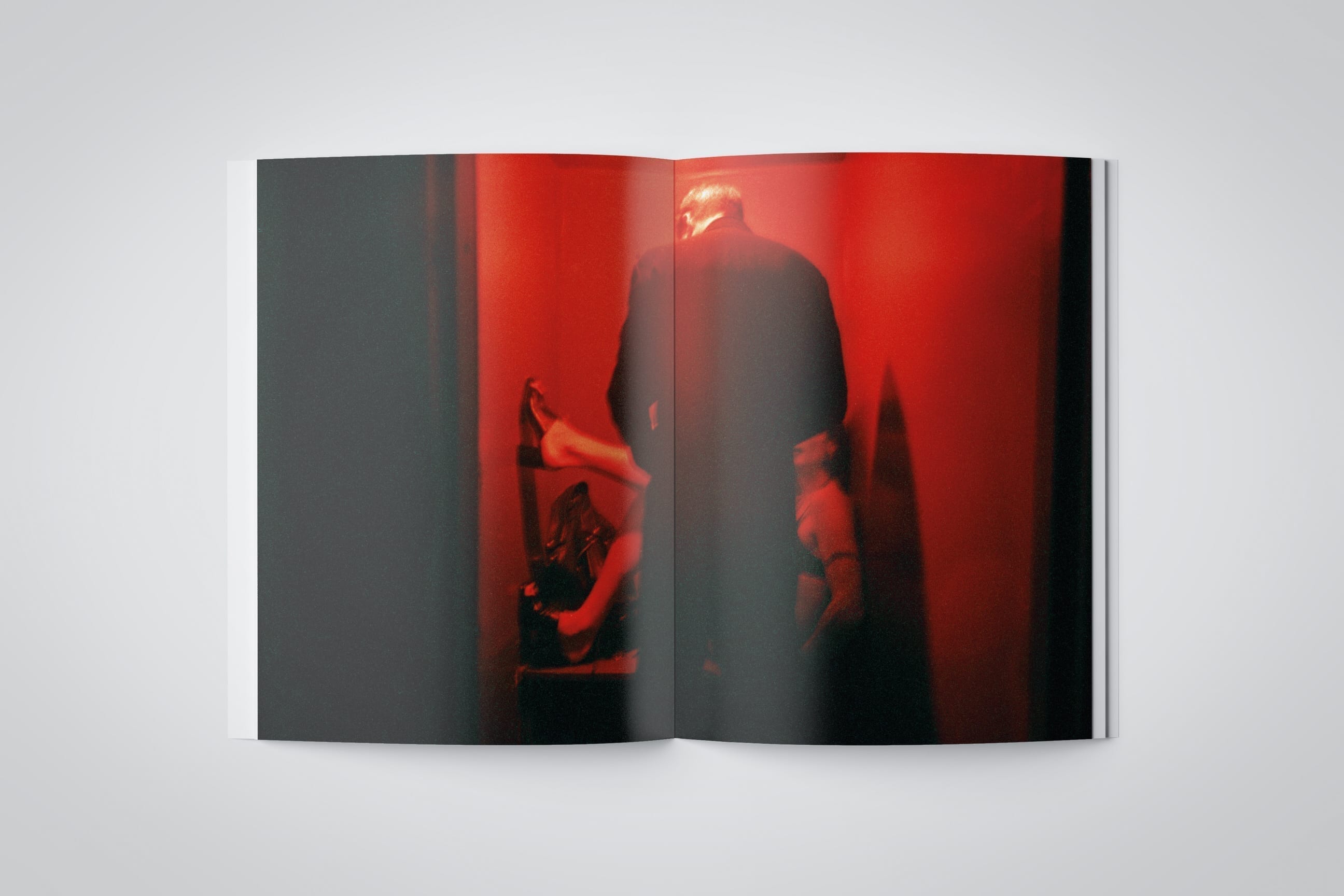
In AGENDA, we talk to the first winner of the Anamorphosis Prize, a new $10,000 prize aimed at self-publishers, we round up the most interesting product releases from this year’s Consumer Electronics Show.
Maisie Skidmore speaks to the unrivalled Martin Parr about his new show at the Barbican, which collects images of Britain seen through foreign eyes, featuring some of the 20th century’s leading photographers. “I have a constant desire to unearth new things,” Parr says.
As Los Angeles pays tribute to Robert Mapplethorpe with two concurrent retrospectives, we speak to LACMA’s head of photography about the “inherent dualities” in his work.
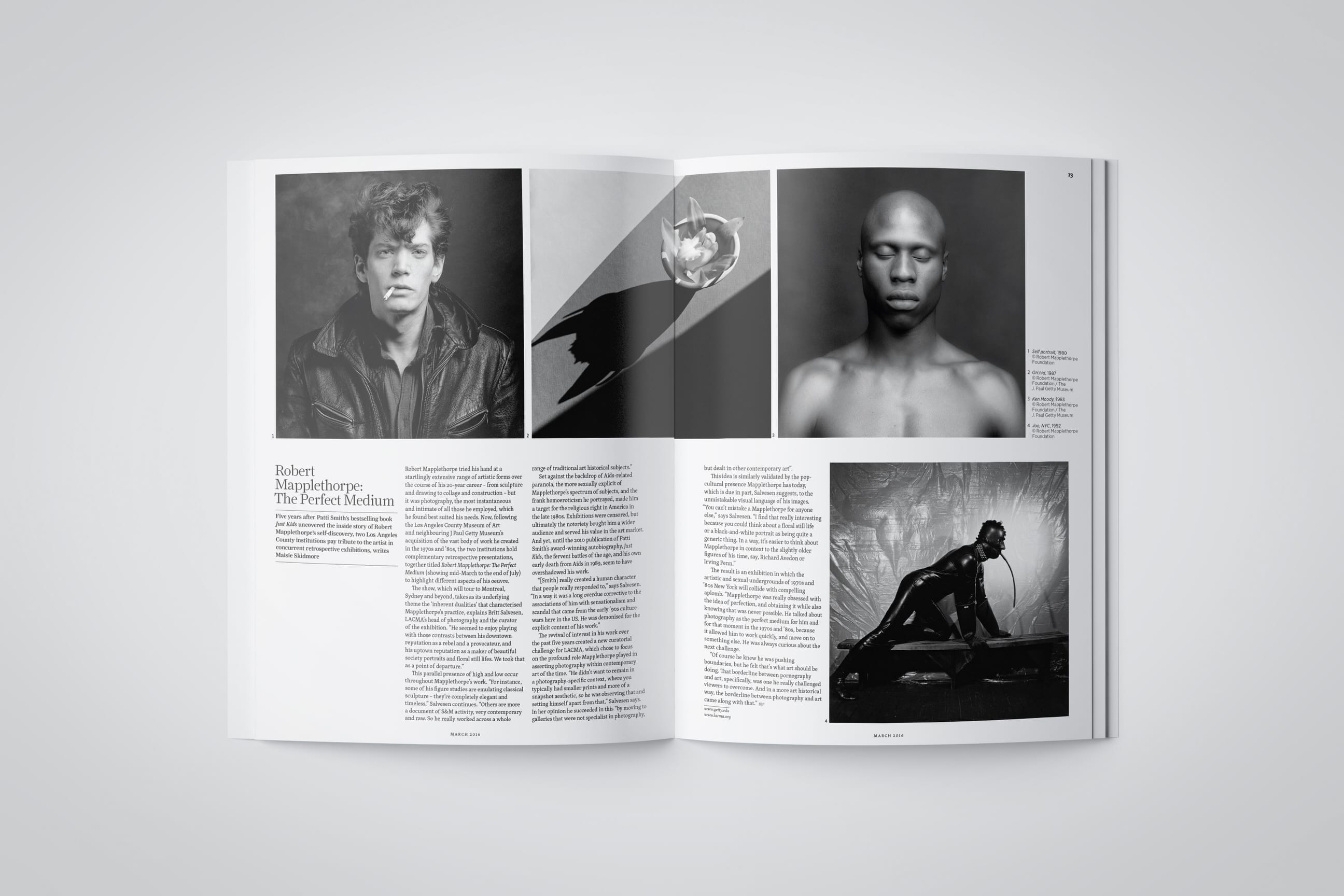
PROJECTS features photographers offering two contrasting angles on two different topics. Wiktoria Wojciechowska and Calum Douglas address the representation and emotional fallout of war, while Farhad Rahman and Alexander Krack examine different experiences of leisure.
And in TECHNOLOGY, Damien Demolder tests the hotly anticipated Leica SL, the new range of manual focus Milvus lenses from Zeiss. We also speak to Fuji senior product manager Takashi Ueno about Japanese manufacturer’s plans for the future.
Available to buy now: You’ll find it in all good newsagents or if you’re digitally inclined, get it on your iPhone or iPad in the App Store.
Want to read about the best in contemporary photography year-round? Look out for our latest discount subscription offers.
